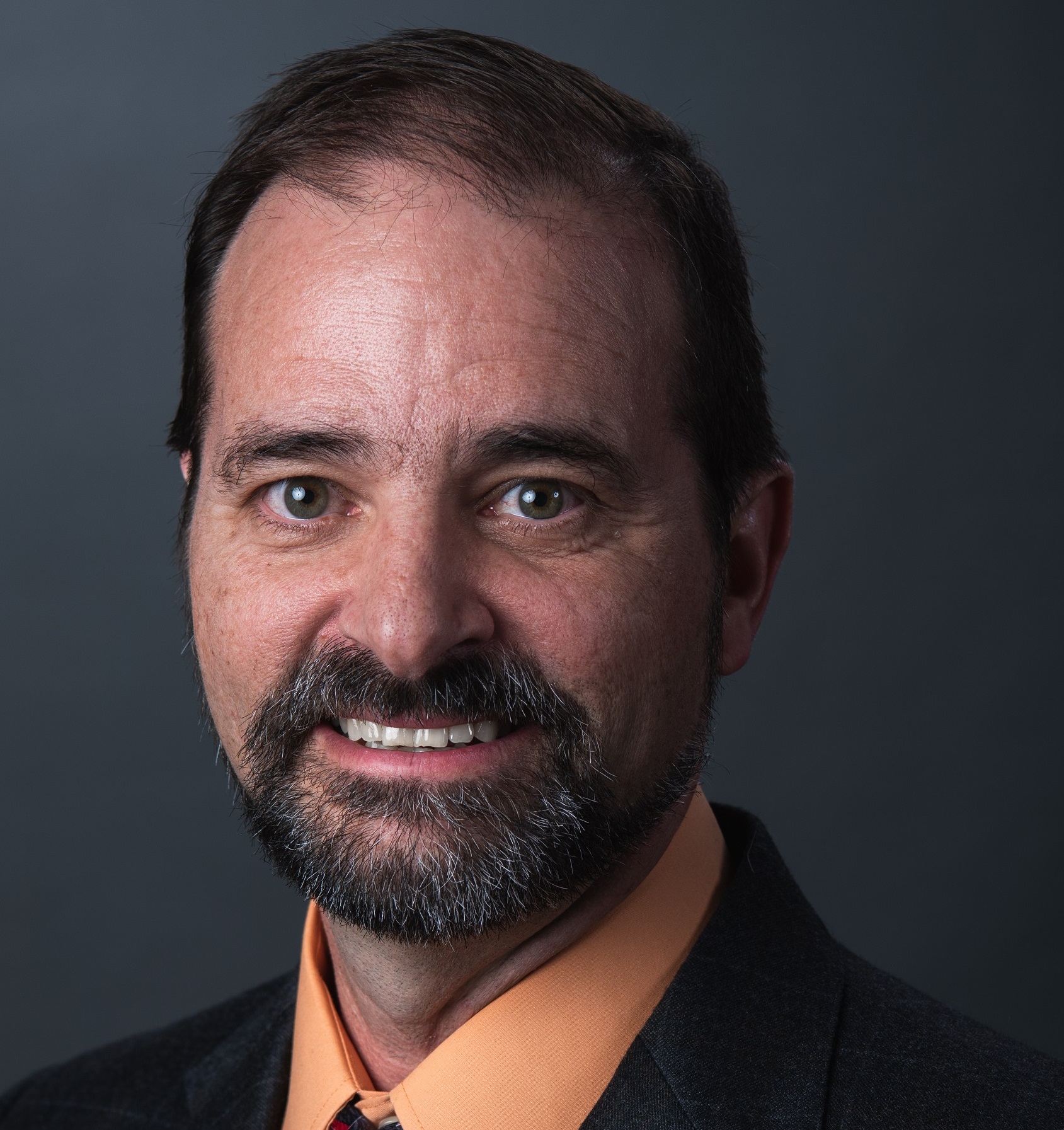STE Highlights, December 2022
Awards and Recognition
Materials Science and Technology
Research examines defect distribution at metal-oxide interface for future reactor material
Physics
Results in the MAJORANA DEMONSTRATOR search for solar axions
First results reveal dark matter search power of Coherent CAPTAIN-Mills experiment
Awards and Recognition
Zapf named deputy director of the Quantum Science Center
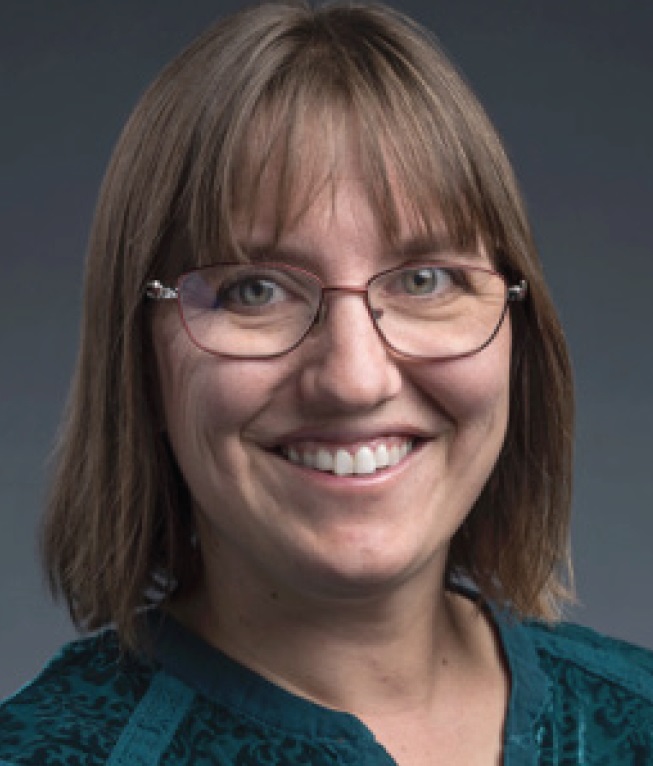
Vivien Zapf
Vivien Zapf has been named deputy director of the Quantum Science Center. Headquartered at Oak Ridge National Laboratory, the Quantum Science Center combines resources and expertise from national laboratories, such as Los Alamos National Laboratory, and from universities and industry partners to accelerate the design and development of novel quantum technologies. Zapf will be remaining a scientist at Los Alamos National Laboratory where she works in the National High Magnetic Field Laboratory’s Pulsed Field Facility.
As deputy director, Zapf will collaborate with the Quantum Science Center leadership team to oversee research related to quantum materials, sensors and algorithms as well as continue the center’s steady stream of workforce development activities aimed at identifying and educating the next generation of quantum scientists and engineers. The center’s research objectives include cultivating a better understanding of complex quantum states within magnetic and electronic materials. These materials can form robust states of matter capable of advancing quantum computing, optimizing quantum algorithms and addressing the long-standing problem of noise in high-performance quantum devices.
At Los Alamos, Zapf conducts research in quantum magnetism as well as magnetoelectrics, which are prized for their combination of useful magnetic and electrical properties. Her research in quantum spin liquids focuses on using high magnetic fields as tools to induce, probe and understand potential quantum spin liquid states.
A fellow of the American Physical Society, Zapf was recognized as an APS outstanding referee in 2019 and currently serves as the chair of APS’s Division of Materials Physics. Among other projects, she also leads the magneto-electric couplings in quantum materials thrust for the Center for Molecular Magnetic Quantum Materials, a DOE Energy Frontier Research Center located at the University of Florida.
Zapf received her bachelor’s degree in physics from Harvey Mudd College and earned her master’s degree and doctorate in physics from the University of California, San Diego, before completing a postdoctoral fellowship at the California Institute of Technology and subsequently joining Los Alamos National Laboratory as a director’s postdoctoral researcher in 2004.
Chacon named co-director of $15 million fusion energy research collaboration
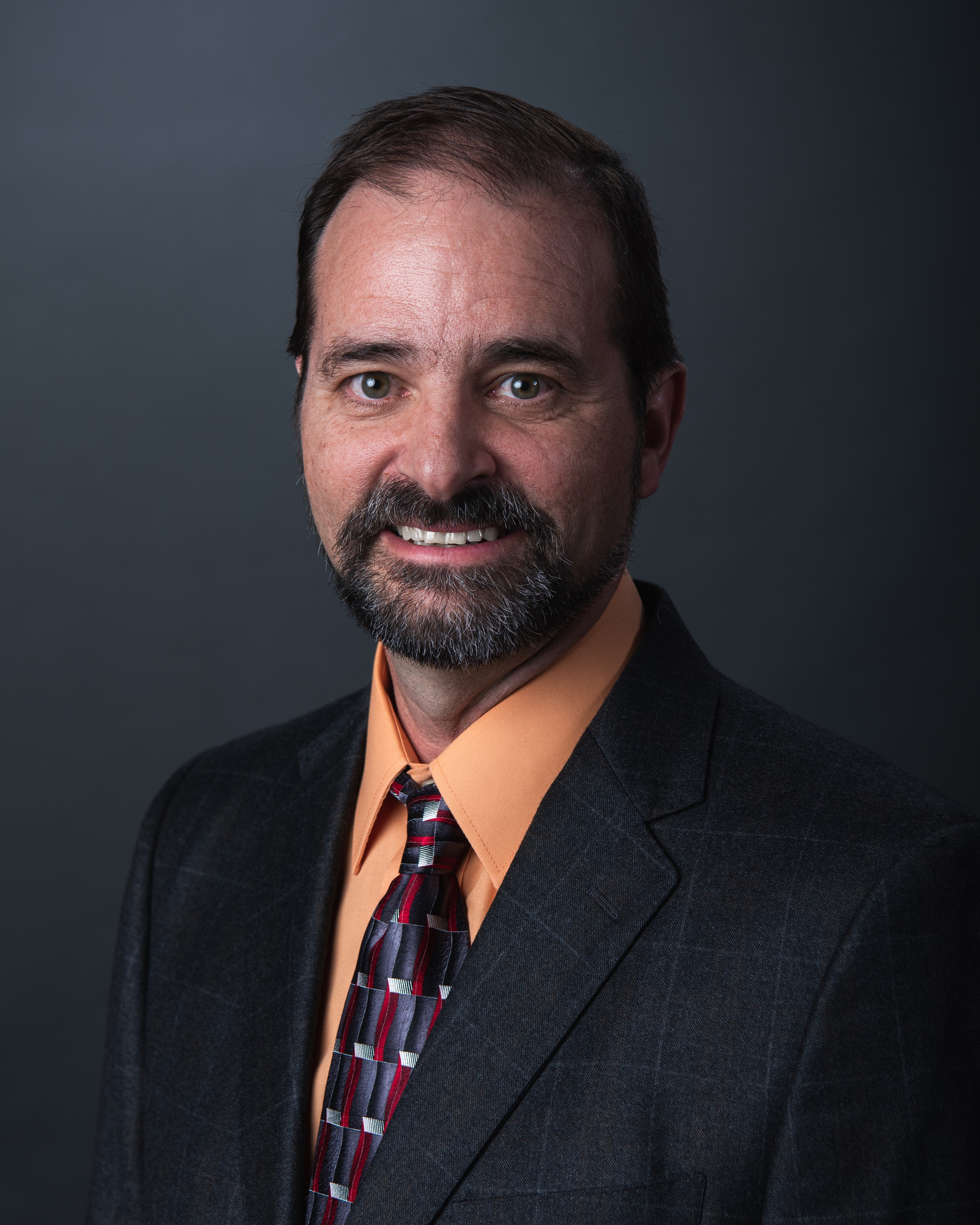
Luis Chacon
Laboratory scientist Luis Chacon (T-5) recently became the co-director of a Department of Energy Applied Scientific Computing Research project to help deliver on the promise of nuclear fusion. The Center for Hierarchical and Robust Modeling of Non-Equilibrium Transport, or CHaRMNET, is one of four new Mathematical Multifaced Integrated Capability Centers supported by the DOE. The five-year, $15 million project will develop new mathematical and computational tools to better model the physics needed to understand, control and sustain fusion.
The center was created to provide end-to-end computational approaches that enable fusion researchers to simulate plasmas quickly and reliably enough that they can use the results to optimize and make important design decisions under uncertainty. Approaches to fusion under development include magnetically confined fusion, where magnetic fields are used to contain the fusion reaction, and inertial confinement fusion, a technique that bombards a target with lasers or ion beams from virtually every angle, essentially squeezing the target’s nuclei until they fuse. In either case, optimizing the processes to allow for sustained and contained fusion requires better-developed mathematical underpinnings to simulate and optimize plasma systems.
CHaRMNET will leverage the latest advances in algorithms, methodology, high-performance supercomputing and more to create approaches that tackle the multidimensional modeling requirements of fusion. A first-of-its-kind holistic approach will exploit structure within models to mitigate the curse of dimensionality — the concept that resources needed to solve a problem scale exponentially with the dimension of the problem — and to bridge a wide range of length and time scales in plasma science. Fundamental plasma models are seven-dimensional and are presently computationally intractable (with existing mathematical methods and computational resources) to drive optimization and uncertainty quantification at the engineering scale of plasma systems.
Chacon, a leading expert in modeling plasmas for fusion, is joined by researchers at eight other universities and national labs across the country. The team includes collaborators from Michigan State University, Lawrence Livermore National Laboratory, Los Alamos National Laboratory, Oak Ridge National Laboratory, Sandia National Laboratories, the University of Colorado-Boulder, the University of Delaware, the University of Massachusetts-Dartmouth and the University of Washington.
Chacon is a graduate of the Polytechnic University of Madrid, Spain, where he earned a master’s degree in industrial engineering. He completed his doctoral degree in nuclear engineering at the University of Illinois Urbana-Champaign in 2000 and started a director’s postdoctoral fellowship at Los Alamos that same year, becoming a staff member in 2002. A fellow of the American Physical Society, he earned the prestigious Ernest Orlando Lawrence Award for 2021 for seminal contributions in multiscale algorithms for fluid, kinetic and hybrid simulation of plasmas, enabling scientific breakthroughs in fast magnetic reconnection and self-organization in magnetic fusion systems, and in reactivity degradation in inertial fusion systems.
Chemistry
Innovative biosensing achieves single-molecule detection of pathogen nucleic acids directly in saliva
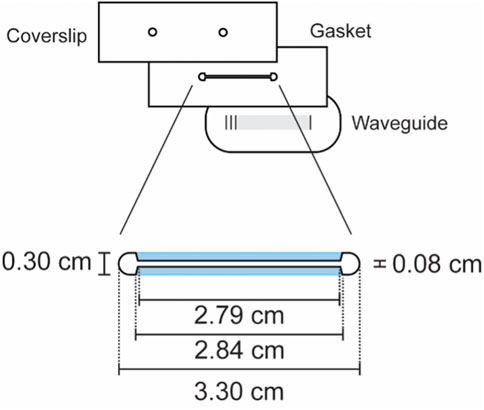
Trapezoid-subtracted geometric stadium flow cell design. The surface area of this flow cell is approximately 34.9 mm2, giving the cell a volume of approximately 17.4 microliters. Blue regions denote the trapezoids that were subtracted from a geometric stadium to yield this particular geometry. Image credit: Frontiers in Sensors

Specific detection of influenza RNA at the single-copy level in saliva, with RFU referring to relative fluorescence units: (A) spectra of influenza A RNA in 200 microliters of saliva (10 zeptomolar, blue; 100 zeptomolar, purple; 1 attomolar, pink) compared to saliva alone (green) and the molecular beacon in buffer alone (gray). 10 zeptomolar represents estimated single-copy level. (B) Peak normalized fluorescent intensity as a function of influenza A RNA concentration in saliva. (C) Detection of 4.69 log10 copies per milliliter of genomic influenza A RNA. Image credit: Frontiers in Sensors
The challenge of timely, accurate detection of diseases has been amplified through the past several years of pandemic. Nucleic acid detection, one method of pathogen detection, typically offers a level of sensitivity that ensures accurate results, but currently requires time-consuming and expensive nucleic acid amplification. Building on Laboratory-developed biosensing technology, a team in the Physical Chemistry and Applied Spectroscopy group at Los Alamos National Laboratory has developed a nucleic acid biosensor that can detect pathogens with single-molecule sensitivity and deliver fast, accurate results.
Specific detection of viruses often requires time-consuming and expensive nucleic acid amplification to achieve sensitivity at the single-copy level. The direct detection of nucleic acids using biosensors could support rapid and fieldable diagnostics and biosurveillance. In a recent paper in the journal Frontiers in Sensors, Los Alamos researchers show that a waveguide based-optical biosensor can be used to detect single-molecules of viral nucleic acids directly in saliva with results in minutes. The innovations to attain this ultra-sensitive level of detection include a novel flow cell shape and an optimized experimental workflow in order to maintain specificity in the complex biological sample of saliva. Together, these results present a biosensor that can detect highly specific nucleic acid sequences without amplification in minutes.
The redesigned flow shape of a trapezoid-subtracted geometric stadium and modified experimental procedures are key to ultra-sensitive detection without amplification. The procedures allow for the measurement of sub-attomolar analytes in microliter quantities on the fluorescence-based waveguide biosensor. The researchers presented assays demonstrating specific detection of influenza A RNA in saliva at the single-copy level (10 zeptomolar) using a fluorescent molecular beacon probe designed using the team’s Fast Evaluation of Viral Emerging Risks (FEVER) computational tool. The isolated genomic influenza A RNA was detected at a clinically relevant concentration constituting a sensitivity improvement of over 12 orders of magnitude compared to the team’s previous nucleic acid detection work. The study illustrates the significant enhancements that can be gained with optimized experimental design.
Funding and mission
This work is supported by the Laboratory Directed Research and Development program. It supports the Global Security mission area and the Science of Signatures capability pillar.
Reference
“Amplification-free nucleic acid detection with a fluorescence-based waveguide biosensor,” Frontiers in Sensors, (2022); DOI: 10.3389/fsens.2022.948466. Authors: Philip A. Kocheril, Kiersten D. Lenz, Daniel E. Jacobsen and Jessica Z. Kubicek-Sutherland (Los Alamos National Laboratory)
“Fast Evaluation of Viral Emerging Risks (FEVER): A computational tool for biosurveillance, diagnostics, and mutation typing of emerging viral pathogens,” PLOS Global Public Health, (2022); DOI: 10.1371/journal.pgph.0000207. Authors: Zachary R. Stromberg, James Theiler, Brian T. Foley, Adán Myers y Gutiérrez, Attelia Hollander, Samantha J. Courtney, Jason Gans, Alina Deshpande, Ebany J. Martinez-Finley, Jason Mitchell, Harshini Mukundan, Karina Yusim, Jessica Z. Kubicek-Sutherland (Los Alamos National Laboratory)
Technical Contact: Jessica Kubicek-Sutherland (C-PCS)
Computer, Computational and Statistical Sciences
Inference-based quantum sensing framework developed
Quantum sensors can be used to estimate the strength of a weak magnetic field. By measuring the system’s response at only a few magnetic fields, the data-driven framework provides a method to infer and fully characterize the quantum system’s ability as a sensor.
The recent advent of quantum technologies ushers in the possibility of controlling quantum systems, such as individual atoms or ions, to previously unprecedented degrees of precision. Quantum sensing uses quantum systems as sensors to probe and learn something from the environment of the system (such as a weak magnetic, a temperature, the gravity of the earth, a gravitational wave, or even detecting dark matter). By leveraging the laws of quantum mechanics, quantum systems can reach much higher precision than those attainable by classical sensors.
While quantum sensing has already enabled unprecedented sensitivity when detecting physical signals quantum sensing protocols typically require significant knowledge about the quantum system, its environment, and how the two interact. However, such information is not always accessible (or is only partially accessible), inherently limiting the effectiveness of standard quantum sensing techniques.
In the new work published in Physical Review Letters, a team led by Los Alamos National Laboratory scientists has introduced a novel, data-driven framework for quantum sensing, that can learn from only a few measurements how a system truly responds when interacting with its environment. Inference techniques can then be used to fully characterize the system as a sensor, and ultimately to improve its accuracy when estimating a signal from its environment.
By learning from data, the new quantum sensing framework removes several of the bottlenecks that limit other quantum sensing approaches. Those limitations include lack of previous knowledge of the system-environment interaction, or the use of proxy techniques that usually loose information about the sensor. In particular, the sensing scheme developed by the researchers is able to infer, or learn, how the system will respond to any value of the signal by only observing it for a small number of signal values. For instance, if the system contains n atoms, and one wants to measure a magnetic field, one needs to measure how the atoms’ measured response changes at 2n+1 appropriately picked fields. These measurements then suffice to fully learn how the quantum system will respond to other unknown magnetic fields. The method leverages techniques from quantum machine learning and polynomial interpolation, and could lead to new insights and methodology for the characterization, implementation and benchmarking of sensing protocols.
The proposed framework presents a key advantage in that it can be readily combined with existing sensing protocols. The inferred response function could be explored in a variational setting, with the experimental setup optimized to maximize the sensitivity and parameter prediction accuracy. Those improvements could lay the groundwork for data-driven quantum machine learning for quantum systems where the optimization procedure does not require a precise characterization of the system, its environment, and their interaction.
Reference
“Inference-Based Quantum Sensing,” Physical Review Letters, 129, 190501 (2022); DOI: 10.1103/PhysRevLett.129.190501. Authors: C. Huerta Alderete, Max Hunter Gordon, Frédéric Sauvage, Andrew T. Sornborger, Patrick J. Coles, and M. Cerezo (Los Alamos National Laboratory); and Akira Sone (Aliro Technologies, Inc.).
Funding and mission
The work was supported by the Department of Energy Office of Advanced Scientific Computing Research, by the Quantum Science Center and by the Laboratory Directed Research and Development program. The work supports the Global Security mission area and the Information, Science and Technology capability pillar.
Technical contact: Marco Vinicio Sebastian Cerezo de la Roca (CCS-3)
Materials Science and Technology
Research examines defect distribution at metal-oxide interface for future reactor material
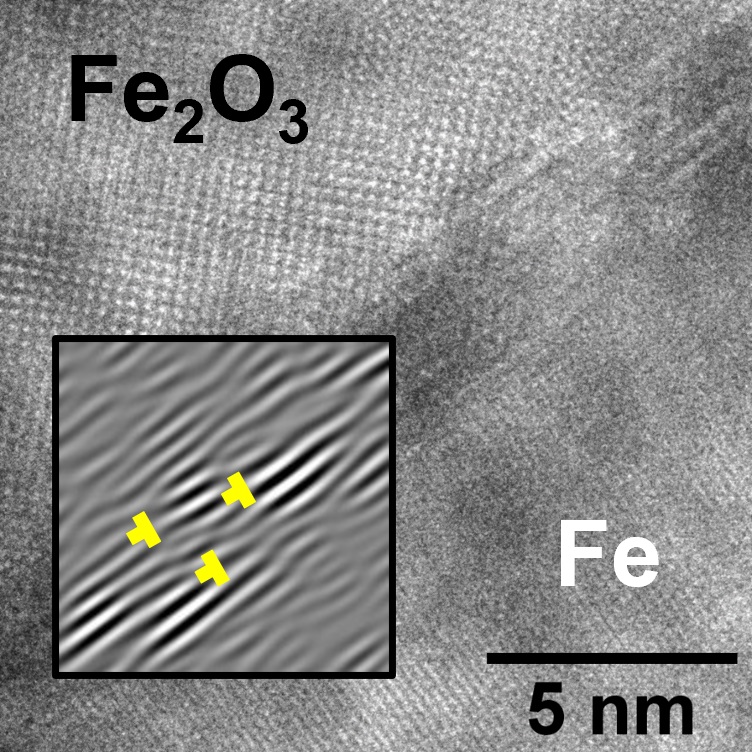
This inverse Fast Fourier Transform reconstruction, as uncovered by transmission electron microscopy, shows irradiation induced dislocations at the interface. The dislocations, not present in the unirradiated material, are behind a mechanism for the redistribution of radiation-induced point defects. The dislocations cause defect accumulation close to the interface.
Materials under high energy radiation in a nuclear reactor develop various types of defects, including vacancies, interstitials, dislocations and voids. In such a hostile environment, a thin oxide layer formed on the metal protects the surface from corrosion. But it remains understudied and not fully understood how the presence of the oxide layer impacts the evolution of radiation defects in the metal. A new Journal of Applied Physics paper from a research team including Los Alamos National Laboratory scientists examines the defect distribution of an irradiated metal and oxide interface and how it evolves with an increasing dose of radiation. The research found surprising radiation-induced defect distribution mechanisms at the metal and oxide interface, and that radiation-induced dislocations at the interface preferentially absorb interstitials and affect defect distributions in the metal.
In an extreme environment that combines high temperature, high pressure and corrosive media, defects can gradually degrade materials. The research team used two types of characterization to discover the radiation-induced defect distribution mechanism at the metal-oxide interface: positron annihilation spectroscopy, which measures the elapsed time between the implantation of positrons into material and the emission of annihilation radiation, and transmission electron microscopy, which transmits electrons through a material for imaging. At the ion beam laboratories at Los Alamos National Laboratory and Sandia National Laboratories, the team irradiated an Fe2O3/Fe bilayer with 2 megaelectron volt Fe ions with an implantation depth of ~1 micrometer. The oxide was 50 nanometers thick.
At low doses of radiation, no significant vacancy accumulation was observed near the interface as the interface works as a neutral defect sink. However, with increasing doses, the formation of radiation induced dislocations at the interface suggested preferential absorption of interstitials. Vacancy accumulation was observed accordingly in the metal underneath in the positron annihilation spectroscopy data. The results also demonstrate that the passive oxide layers formed during corrosion impact the defect distribution in the metal underneath. The team’s findings emphasize that the synergistic impact of radiation and corrosion will differ from their individual impacts.
Funding and mission
This work was supported by the Department of Energy Office of Science, Basic Energy Sciences. The work supports the Global Security mission area and the Materials for the Future capability pillar.
Reference
“Interface effect of Fe and Fe2O3 on the distributions of ion induced defects,” Journal of Applied Physics, 132, 105901 (2022); DOI: 10.1063/5.0095013. Authors: H. Kim, M.R. Chancey, T. Chung, Y. Wang, J.K. Baldwin, B.K. Derby, N. Li (Los Alamos National Laboratory); I. Brackenbury, F.A. Selim (Bowling Green State University); M.O. Liedke, M. Butterling, E. Hirschmann, A. Wagner (Helmholtz-Zentrum Dresden-Rossendorf); K.H. Yano and D.J. Edwards (Pacific Northwest National Laboratory).
Technical contact: Hyosim Kim (MST-8)
Physics
Results in the MAJORANA DEMONSTRATOR search for solar axions
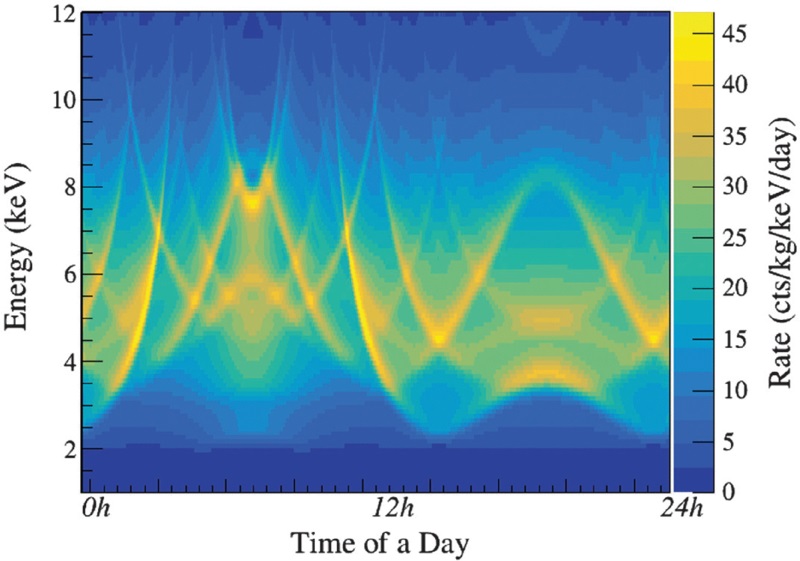
Axion signatures from coherent Primakoff-Bragg scattering averaged over all possible orientations of horizontal crystal planes, predicted for a 1-kg HPGe detector located at SURF for gaγ=10−8 GeV−1. The time duration shown is a full day.
Axions are hypothetical particles, thought not only to be a type of dark matter, but might also capable of explaining two of the most interesting problems in physics. Between 2017 and 2019, the Majorana Demonstrator experiment, an international collaboration, has searched for solar axions with a set of Ge-76-enriched high purity germanium detectors using a 33-kg per year exposure. A paper recently published in Physical Review Letters offers a temporal-energy analysis out of the Majorana research, placing new limits on axion parameters — without finding evidence of solar axions.
Axions have been proposed to solve the strong-CP problem in quantum chromodynamics, the theory of the strong interaction between quarks mediated by gluons. The strong-CP problem involves an unexplained aspect of the strong interactions between where it includes a symmetry of CP, jointly the charge conjugation symmetry (C) and parity symmetry (P). The theory should permit a violation of this symmetry but experimentally it is not seen. Axions might also explain another pressing problem in physics: why the neutron dipole moment — a measure for the distribution of positive and negative charge inside the neutron — is so small.
The demonstration, nearly a mile underground at the Sanford Underground Research Facility in South Dakota, centers on the sun as a photon bath in a significant electromagnetic field, and thus a potentially prodigious source of axions coming from an effectively point-like source. If axions exist, they can couple directly to photons, allowing conversion between the two particles in that electromagnetic field. The axions can then convert to photons in the intense local field near a target atomic nucleus.
The crystal lattice of a germanium detector, containing germanium crystals enclosed in deep-freeze cryostat modules and protected by lead shielding — can enhance the axion-to-photon conversion effect due to Primakoff-Bragg scattering, when the incident angle of the axion satisfies the Bragg scattering condition for a given axion energy. The result is a dramatic time-energy dependence of the anticipated event rate. Ultimately, the Majorana Demonstrator results, while not excluding the possibility of solar axions, did not find evidence of the particles and placed new limits on axion parameters.
Reference
“Search for Solar Axions via Axion-Photon Coupling with the Majorana Demonstrator,” Physical Review Letters, 129, 081803 (2022); DOI: DOI: 10.1103/PhysRevLett.129.081803. Authors: I. J. Arnquist, E. W. Hoppe, R. T. Kouzes (Pacific Northwest National Laboratory); F. T. Avignone, III, T. E. Lannen V., D. Tedeschi (University of South Carolina); A. S. Barabash (National Research Center Institute for Theoretical and Experimental Physics); C. J. Barton, T. K. Oli, L. S. Paudel, W. Xu (University of South Dakota); K. H. Bhimani, B. Bos, T. S. Caldwell, M. L. Clark, J. Gruszko, I. S. Guinn, C. R. Haufe, R. Henning, D. Hervas Aguilar, A. Li, E. L. Martin, G. Othman, A. L. Reine, J. F. Wilkerson (University of North Carolina, Chapel Hill); E. Blalock (North Carolina State University), M. Busch (Duke University), M. Buuck, J. A. Detwiler, A. Hostiuc, N. W. Ruof, C. Wiseman (University of Washington); Y-D. Chan (Lawrence Berkeley National Laboratory), C. D. Christofferson (South Dakota School of Mines and Technology); C. Cuesta (Centre for Energy, Environmental and Technological Research); Yu. Efremenko (University of Tennessee), A. M. Lopez (University of Tennessee); H. Ejiri (Osaka University); G. K. Giovanetti (Williams College); M. P. Green (North Carolina State University); V. E. Guiseppe, J. M. López-Castaño, D. C. Radford, R. L. Varner, C.-H. Yu (Oak Ridge National Laboratory); M. F. Kidd (Tennessee Tech University); R. D. Martin (Queen’s University); W. Pettus (Indiana University); A. W. P. Poon (Lawrence Berkeley National Laboratory); S. Vasilyev (Joint Institute for Nuclear Research); P.-H. Chu, S. R. Elliott, I. Kim, R. Massarczyk, S. J. Meijer, K. Rielage, D. C. Schaper, B. X. Zhu (Los Alamos National Laboratory).
Funding and mission
The work is supported by the U.S. Department of Energy, Office of Science, Office of Nuclear Physics, by the National Science Foundation, and by the Laboratory Directed Research and Development program at Los Alamos. The work supports the Global Security mission area and the Nuclear and Particle Futures capability pillar.
Technical contact: Steven Elliott (P-1)
First results reveal dark matter search power of Coherent CAPTAIN-Mills experiment
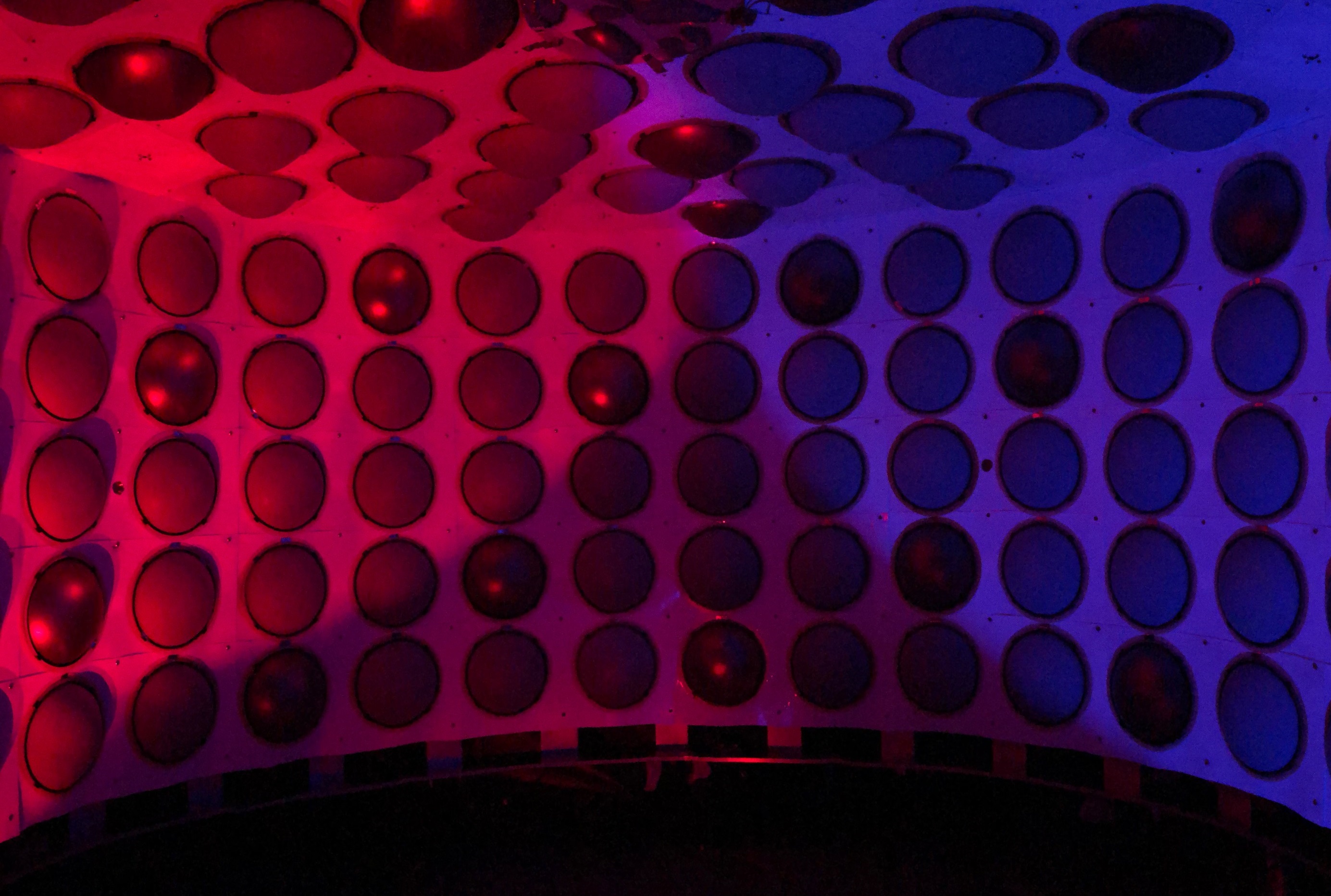
Inside of the newly constructed CCM200 detector showing the 200 PMT light sensors (circles) and the interior walls coated with a special material to convert the argon scintillation light into visible light that can be detected by the photo-multiplier tubes. Dark sector particles that are produced in the beam travel to the detector and then interact in the argon producing a clear scintillation light signal that is recorded by the data acquisition system. There is an outer veto region to reject events coming from the outside such as cosmic rays.
The first physics results from the Coherent CAPTAIN-Mills (CCM) experiment, led by Los Alamos and including research institutions from the United States, United Kingdom and Mexico, powerfully demonstrate the capability of the accelerator-based dark matter search underway at the Los Alamos Neutron Science Center. The results garnered from the 2019 engineering run of a prototype detector, CCM120, were recently published in Physical Review Letters and Physical Review D.
The CCM experiment is a 10-ton liquid argon detector designed to search for “highly motivated” new particles — particles whose existence is strongly implicated in theories beyond the Standard Model of Particle Physics — including exotic states of matter such as sterile neutrinos, vector portal dark matter and axions. (CAPTAIN stands for “Cryogenic Apparatus for Precision Tests of Argon Reactions with Neutrinos.”) These dark sector particles are theorized to explain part of the 95 percent missing energy density in the universe and significant anomalies observed at other short baseline experiments over the past few decades.
The confirmation of dark sector particles would have a profound impact on the understanding of the Standard Model of particle physics, as well as the origin and evolution of the universe.
To produce these new particle candidates, high-intensity 800-megaelectron volt protons generated by the LANSCE accelerator are impacted on a tungsten target in the Lujan Center. The beam of potential dark sector particles then traverses 23 meters to the CCM detector to interact in the liquid argon and become detected scintillation, or the emission of light. The CCM detector’s interior walls are lined with sensitive photomultipliers that detect light flashes — single photons — that result when a regular or dark sector particle jostles an atom in the tank of liquid argon. CCM120 contained 120 8-inch photomultiplier tubes to demonstrate that the search will work. Employing the fast timing of the detector and beam and careful measurements remove the effects of regular Standard Model background particles.
With only one-tenth of the total planned data taken and analyzed, the 2019 run’s results placed new limits on the search for accelerator-produced dark matter. They also provided lessons learned that guided the development and construction of the CCM200 detector, an upgraded detector with 200 photo-multiplier tubes that began collecting data in 2021 and is planned to run for at least three years to reach its full search potential.
In Physical Review D, the team described CCM’s operation, which included testing of new technology and exploration of new regions in light dark matter parameter space. In Physical Review Letters, the team reported the first results of its search for leptophobic dark matter. Despite only one and a half months of accumulated luminosity, contaminated liquid argon, and nonoptimized shielding, CCM’s first engineering run achieved sensitivity to previously unexplored parameter space of light dark matter models motivated by early universe relic density constraints.
In the coming years, further significant results from CCM200 are expected on dark matter and axion searches and testing of the short baseline anomalies discovered from the previous Los Alamos-led Liquid Scintillator Neutrino Detector and Fermilab-based MiniBooNE experiments.
Funding and mission
The development of the CCM experiment was funded by the Lab’s Laboratory Directed Research and Development program and the DOE Office of Science’s Office of High Energy Physics. The work supports the Laboratory’s Global Security mission area and Nuclear and Particle Futures capability pillar.
References
“First leptophobic dark matter search from the Coherent-CAPTAIN-Mills liquid argon detector,” Physical Review Letters, 129, 021801 (2022); DOI: 10.1103/PhysRevLett.129.021801. Authors: A. A. Aguilar-Arevalo, M. Chavez-Estrada, J. C. D’Olivo, J. Plata-Salas (National Autonomous University of Mexico); D. S. M. Alves, M. Borrego, A. Chavez, R. L. Cooper, J. R. Distel, D. Evans, E. Guarincerri, E. C. Huang, C. Kelsey, K. Knickerbocker, W. C. Louis, J. Mirabal, P. deNiverville, D. Poulson, E. Renner, W. Sondheim, C. Taylor, W. H. Thompson, R. T. Thornton, R. G. Van de Water (Los Alamos National Laboratory); S. Biedron, D. Fields, M. Gold, T. J. Schaub (University of New Mexico); J. Boissevain, R. Van Berg (Bartoszek Engineering ); J. M. Conrad, A. Diaz, N. Kamp (Massachusetts Institute of Technology); E. Dunton, M. H. Shaevitz (Columbia University); B. Dutta, S. Verma, R. Mahapatra, S. Maludze, H. Neog (Texas A&M University); A. Elliott, J. Greenwood, J. Gordon, R. Lake, R. Moreno, D. Smith, K. Walker (Embry-Riddle Aeronautical University); V. Pandey, H. Ray, M. Tripathi (University of Florida); and A. M. Szelc (University of Edinburgh).
“First dark matter search results from Coherent-CAPTAIN-Mills,” Physical Review D, 106, 012001 (2022); DOI: 10.1103/PhysRevD.106.012001. Authors: A. A. Aguilar-Arevalo, M. Chavez-Estrada, J. C. D’Olivo, J. Plata-Salas (National Autonomous University of Mexico); D. S. M. Alves, M. Borrego, A. Chavez, R. L. Cooper, J. R. Distel, D. Evans, E. Guarincerri, E. C. Huang, C. Kelsey, K. Knickerbocker, W. C. Louis, J. Mirabal, P. de Niverville, D. Poulson, E. Renner, W. Sondheim, C. Taylor, W. H. Thompson, R. T. Thornton, R. G. Van de Water (Los Alamos National Laboratory); S. Biedron, D. Fields, M. Gold, T. J. Schaub (University of New Mexico); J. Boissevain, MR. Van Berg (Bartoszek Engineering ); J. M. Conrad, A. Diaz, N. Kamp (Massachusetts Institute of Technology); E. Dunton, M. H. Shaevitz (Columbia University); B. Dutta (Texas A&M University); A. Elliott, J. Greenwood, J. Gordon, R. Lake, R. Moreno, D. Smith, K. Walker (Embry-Riddle Aeronautical University); R. Mahapatra, S. Maludze, H. Neog, S. Verma (Texas A&M University); V. Pandey, H. Ray, M. Tripathi (University of Florida); and A. M. Szelc (University of Edinburgh).
Technical contact: Richard Van de Water (P-2)
Theoretical
The advantages of multi-compartment schemes for cell populations
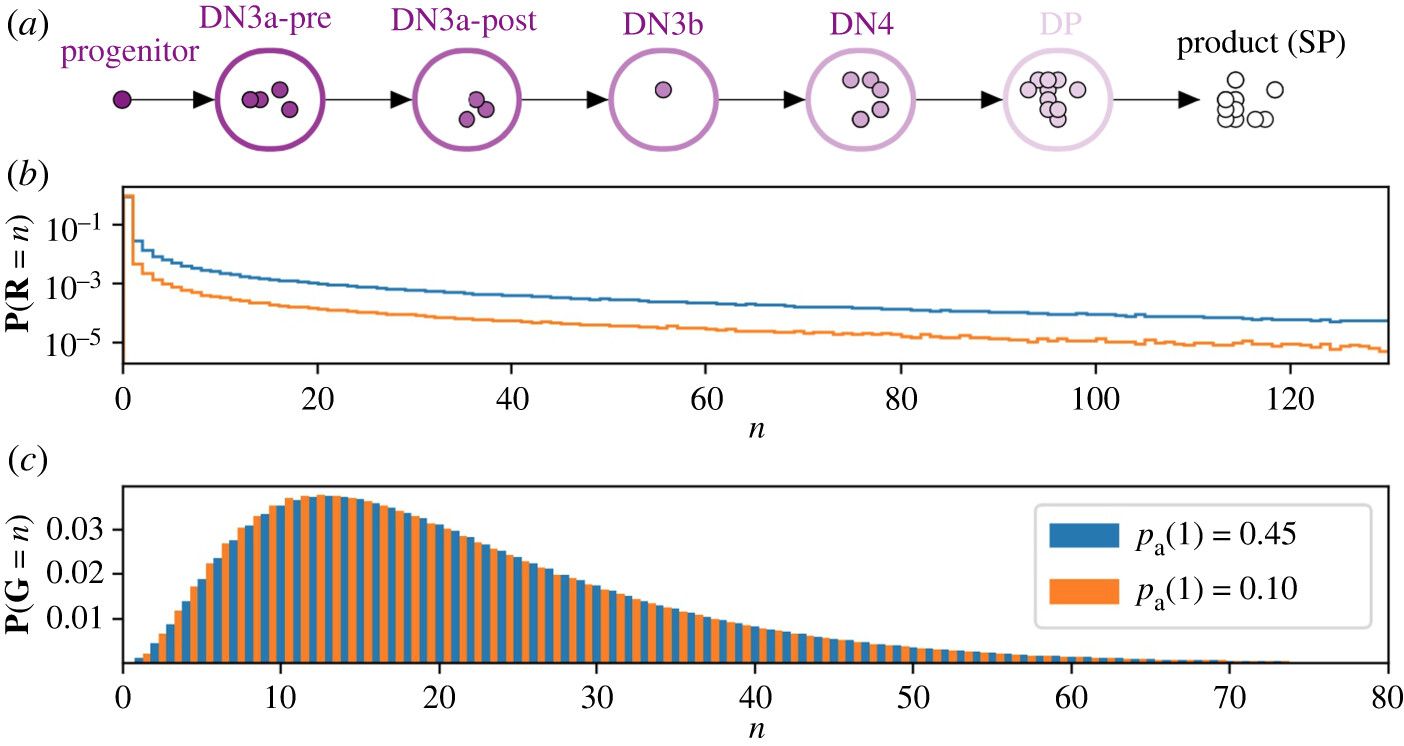
Top: Mathematical model of T cell development from the DN3a to the SP stage. Middle and lower: Numerical results for two cases of the five-compartment thymus model. The histograms show the distributions of family sizes and of cell generation number in the population of product cells. The difference between the two cases is the first compartment, where only death and asymmetric division have non-zero probabilities. Published in the Journal of the Royal Society Interface.
In a new mathematical biology and theoretical immunology study recently published in the Journal of the Royal Society Interface, a research team including members of Los Alamos National Laboratory’s Theoretical Biology and Biophysics (T-6) group tackled the question, “Why are cell populations maintained via multiple compartments?” The team explored the advantages of multiple-compartment schemes in amplifying the progenitor to product cells required to maintain a product cell population from a small flux of progenitors.
Cells of the same phenotype are often thought of as belonging to a compartment, which may correspond to a spatial location, a biological function, or simply a set of cell-surface attributes which can be measured with flow cytometry. In many circumstances, a population of “product” cells performing a specific role is maintained, via a sequence of compartments, from a much smaller progenitor population.
The team sought to understand why multiple such compartments were so often observed rather than a simpler one-step differentiation from progenitor to product cell, finding that a sequence of compartments achieves the amplification of progenitor to product cells required in tissue organization and homeostasis, while avoiding excessive clonality and minimizing the average number of divisions. The study’s mathematical approach was based on two assumptions: amplification (a large ratio of product cells to progenitors) and stochasticity (the unpredictability of the fate of individual cells). Some progenitors do not yield any product cells, while others found large families. In single compartments, large families of cells dominate product cell populations, with many generations separating product cells from progenitors. As the number of compartments increases, the average number of rounds of division in the product cell decreases.
Further, the study’s mathematical model, a branching process, allowed for the analysis of the possible descendants of one progenitor cell, families of cells that journey through the sequence of compartments. The number of cells from one family that become product cells represents a random variable of great biological interest. In the case of one compartment, explicit expressions are derived for the probability generating function of this random variable, and a second one which allows one to keep track of the generation of product cells. The considerations are generalized to include a fourth type of event, asymmetric division; that is, a division event that leaves one daughter cell in the same compartment that the mother cell divided and the other daughter cell exits the compartment. In the asymmetric case, the collaborators showed how to derive the corresponding probability generating functions for the two random variables of interest.
Funding and mission
This research was funded by the EU Commission (H2020 research project), the U.S. Department of Energy, and by the Laboratory Directed Research and Development program at Los Alamos National Laboratory. The work supports the Global Security mission area and the Information, Science and Technology capability pillar.
Reference
“Why are cell populations maintained via multiple compartments?,” Journal of the Royal Society Interface, 19, 196 (2022); DOI: 10.1098/rsif.2022.0629. Authors: Flavia Feliciangeli, Hanan Dreiwi, Martín López-García and Grant Lythe (University of Leeds); Mario Castro Ponce (Comillas Pontifical University); and Carmen Molina-París (Los Alamos National Laboratory).
Technical contact: Carmen Molina-Paris (T-6)


